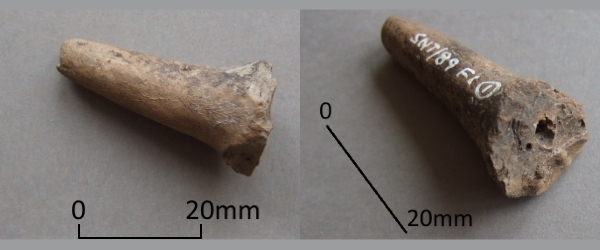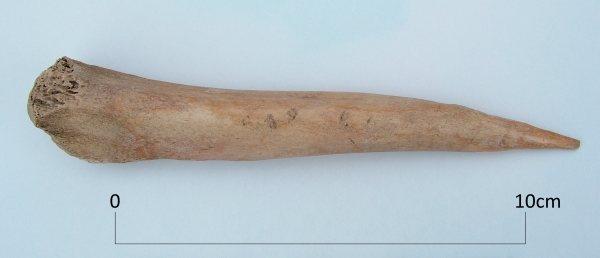
The images illustrate the variety of decorative styles that could be created using a comb, or with a regular impressed pattern,
and illustrate the care that was taken over decorating the better quality pottery vessels in this period in prehistory.

The images illustrate the variety of decorative styles that could be created using a comb, or with a regular impressed pattern,
and illustrate the care that was taken over decorating the better quality pottery vessels in this period in prehistory.


Today’s VM_365 image shows a skewer roughly fashioned from a small animal bone.
This object was found within a Late Iron Age hut floor at Ebbsfleet, Thanet in 1990. The hut floor was made up of a 15cm thick layer of flint pebbles which was covered with a deposit consisting of pottery dating to the late Iron Age, many animal bones, some of which had been roughly fashioned into skewers or awls, a clay spindle whorl and marine shells.
It is not clear what this object would have been used for. Perhaps it was used for extracting marine molluscs from their shells, perhaps it was used in some way during weaving, or perhaps it was a general purpose tool that could be quickly fashioned and used in a myriad of ways.